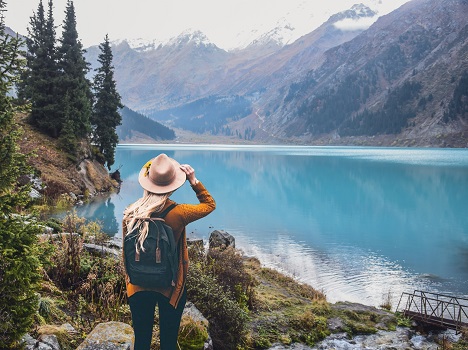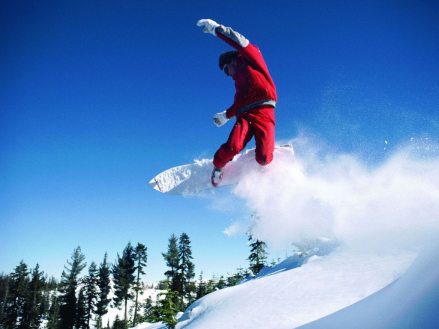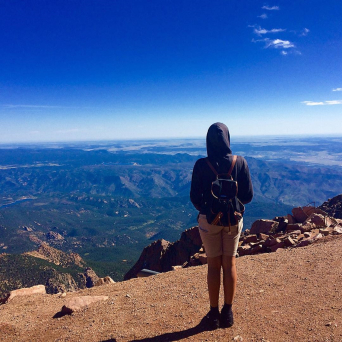- Share
Alexander Frederick Heinrich von Humboldt (1769-1859) was an outstanding German explorer, "the father of modern geography", and "Aristotle of the nineteenth century".
A White Spot Attraction
An extensive region of remote Asia in the early 19th century was a huge
gap on the map. Not a single European scientific researcher, or, let's not even
say a scientist, but just an educated and critically minded traveler of new
time had been to that large territory stretching from Lake Balkhash to the
Himalayas and from Altai to Iran. Geographic information from Humboldt's times
still largely relied on the medieval narrative of Marco Polo and Xuan-Zang.
Famed for its long-term studies of the South American wilderness,
Humboldt was not an armchair scientist. He was invincibly attracted by the
wilderness. India, the Himalayas, China, and particularly Central Asia were his
ultimate dream. But the chance, if not to get there but at least to get closer
to the cherished dream, had not come true fast enough.
It happened only in 1829 when 60-year-old Humboldt, already a
world-famous scientist, together with the naturalist Ehrenberg and the
geologist Rosѐ made a big fact-finding trip to Siberia at the invitation of the
Russian Government. The Encyclopedia of Brockhaus and Efron described the
expedition, which often sounded like an official voyage of honored guests:
"On the 12th of April 1829
Humboldt left Berlin with his companions, Mr. Rosѐ and Mr. Ehrenberg, and on the 1st of May, they arrived in St.
Petersburg. Prior to that, in Berlin, he had received a bill for 1,200 gold
coins (chervonets) and then in St. Petersburg. - 20,000 rubles. Everywhere,
crews, accommodation, horses and everything that could be necessary were
prepared in advance; they were accompanied by a guide - a government official
from the mountain department, Menshenin, who spoke German and French; and in
dangerous regions, at the Asian border, the travelers were accompanied by an
armed escort."

Ridder, Ivanovsky Mountain Peak and Gromotukha River
That's when the great geographer stepped onto the territory of modern
Kazakhstan, having visited the three of its extreme parts, which at that time
had become a part of the Russian Empire. To the east, the expedition visited
Semipalatinsk, Ust-Kamenogorsk, Ridder, the towns of Zyryanovsk, saw the
mountains of Altai, sailed by the Irtysh. In the north, they crossed the town
of Petropavlovsk. To the west, they had been to Uralsk town.
The longest stay was in Altai and Irtysh Land. Let us start with this.
At the end of July
Humboldt got to the town of Ridder. The main difficulty of the expedition was that the world-renowned
scientist and his companions had been greeted everywhere with so much attention
and hospitality, as to why lunches appeared to be more memorable than the
research itself. On the other hand, the citizens of Ridder were not distinguishable with their hospitality
towards Humboldt, compared to the other locations. According to
flashbacks, in Ridder Humboldt with his comrades were provided with several
"miserable dog-hutches" and on top of that they were kept without
being fed the whole day!
Perhaps due to these circumstances, here the Germans saw a lot more of
what could have been lost in case of realization of the typical scenario.
Humboldt descended into the mines, examined the upper reaches of Ulba River,
and even looked behind Ivanovsky Mountain Peak - the noisy and wild river
Gromotukha. He wrote enthusiastically in his letters:
"The peaks of the surrounding mountains, covered with eternal snow, represented the only available view; right in front of the windows of my apartment is the Ivanovsky Mountain Peak that is 7500 ft high. Looked like it was soaring above the clouds...
Just before the evening
Menshinin and I went riding for 10 milestones to see the Gromotukha River
descending from the snow-covered mountain peaks; the river in its terrible fall
discharges huge masses of different species. Its noise is heard two milestones away from the
river, that is why it was given a decent name like Gromotukha. Here, on the
wooded grounds of the mountains, wild goats and bears often flashes before our
eyes; dimensionless forests consist of the highest silver-firs, pines, birches,
and simple poplars.
Ural, in terms of mountains, is, of course, very important, but the real joy of Asian travel was given to us only by Altai!”

Ust-Kamenogorsk, Zyryanovsk, Semey towns
In early August the expedition got to Ust-Kamenogorsk. Here local
merchants offered the guests "a pretty impressive" dinner with
champagne. And on August the 2nd, Humboldt and his companions left for
Bukhtarminskaya Fortress along the road, "which was going through gorges
of high mountains, like crossing the Caucasus”.
The main purpose of the journey deep into Altai, as elsewhere, was to
study nature; in particular, geology (participation of mineralogist Rose added
to the interest). It is no coincidence that Zyryanovsk was so attractive with
its rich silver mines where Humboldt, as elsewhere, descended himself. The Zyryanovsk
mine, which at that time employed 700 miners, was producing 500 pounds of
silver per year.
On August the 5th, the researchers crossed the Chinese border and went
to Baty (in Kazakh - Kosh Tobe), a Chinese kilometer post on the bank of the
Irtysh River, not far from Bukhtarma River. There Humboldt had a long talk with
the local chief, an officer from Beijing, checking his own knowledge about
China. The official talk took place in a yurt with the help of three
translators. One of them translated from French into Russian, the second one -
from Russian to Mongolian, and then the third one translated from Mongolian
into Chinese, and back. The next day travelers returned to the Russian Empire.
From Bukhtarminsk to Ust-Kamenogorsk, they decided to move by the Irtysh
River on rafts. Each raft consisted of three boats with a yurt on the deck as a
protection from the rain. Despite bad weather, that original rafting in the
yurts was inspired by the Germans. Mostly because the Irtysh flowed in a narrow
gorge surrounded by picturesque rocks.

Along the Irtysh River
On August the 8th, they departed from Ust-Kamenogorsk and by August the
15th, they were in Omsk. They lingered in Semipalatinsk (Semey), where they
talked to Kazakh elders and merchants in charge of coffles to Central Asia, a
mysterious region hidden from the European explorers.
In Semipalatinsk, there was someone to talk to in German - a local
superintendent, Lieutenant Colonel Von Klosterman, and a commandant Colonel Von
Kompenom both originated from German Revel. Commandant presented the famous
people with expensive gifts - tiger and leopard skins procured by local
hunters. And an indispensable dinner was held at the merchant Popov's place,
who owned a fair collection of Chinese items and minerals.
A trip along the Irtysh was rapid and swift. So, the European scientists
only admired pictures resembling wandering villages (aouls), coffles of camels,
riding in all directions with Kazakh horsemen. They only stopped for a while
next to such remarkable places as the famous salt lakes - Jamyshevskoe and
Koryakovskoe.

Kazakh celebration in Orenburg
As quickly as before, they rushed along the route of Gorkaya Line
passing by the town of Petropavlovsk. And on September the 9th they already got
to Orenburg, a city that, like Omsk and Semipalatinsk in those days, was
considered as the "gateway to the steppes".
Here, on September the 13th, on the eve of departure, city officials
arranged for the guests a "Kazakh celebration with wrestling, horse races,
running, taking a silver ruble out of a boiler with porridge using only mouth,
music and singing, which apparently attracted the interest of the German
scientists." Although the main task of that comfortable expedition was
still studying nature, a great impression on Humboldt was made by that meeting
with Kazakhs.
"Like bright spots, like
pleasant memories, should I call horse racing and music festival in the Kazakh
steppe near Orenburg," he wrote in one letter. And in the other, he added:
"... A huge mass of nomads excites much more interest than the majestic
rivers and snow-capped peaks. Looking at them you are mentally transported back
into the past, to the era of great
migrations.”

Khan Jangir's regret
Further, the plan included a visit to the Caspian Sea. Initially, they
were supposed to go along the Ural River to the town of Guriev, across the land
of Ural Cossack Army, or across the Bukey Horde. But then they decided not to
risk it as those places were still restless, and went through Samara, Saratov,
and Astrakhan' cities.
But they popped in Uralsk town for a couple of days to see the autumn
floodplain and a traditional Cossack fishing of sturgeon in the Ural River. For
that occasion, a local chief Borodin even pushed hard deadlines for general
army fishing to earlier dates.
Here in Uralsk, "The great Kazakhstan voyage" of the German
geographer had ended. However, all of a sudden, later he had a meeting with one
of the most famous Kazakhs of the time, Khan Jangir, the ruler of Bukey Horde.
The meeting took place on the bank of the Volga River, at the quarters of
Kalmyk Prince Serejab Tyumenev.
It is here, where Humboldt happened to meet with "a very educated
person, speaking Russian, Persian, and Arabic; the young khan of internal
Kazakh Horde, Jegangir (Jangir) Bukeev." The khan said it was regrettable
that the expedition did not go through his territory and treated everybody to
koumiss (fermented mare’s milk).

Instead of an epilogue
Almost two centuries have passed since Humboldt's journey. And the one
who wishes to pass the Kazakhstani paths of the great geographer nowadays will
come into contact with absolutely different realities and travel conditions.
This is due to the fact, that over time not only the political realities have
radically changed, but even geographical representations have become different.
We are not even talking about lifestyles of the people in the lands of past
nomads.
So the one, who will go in the footsteps of the German expedition,
everywhere will find roads and hotels, transport and communication and all
other facilities included in comfortable tourism. And while for Humboldt his lifelong dream of
Central Asia confined on the outskirts, everything, that left undiscovered in
1829, is now open to his current followers!






.jpg)









